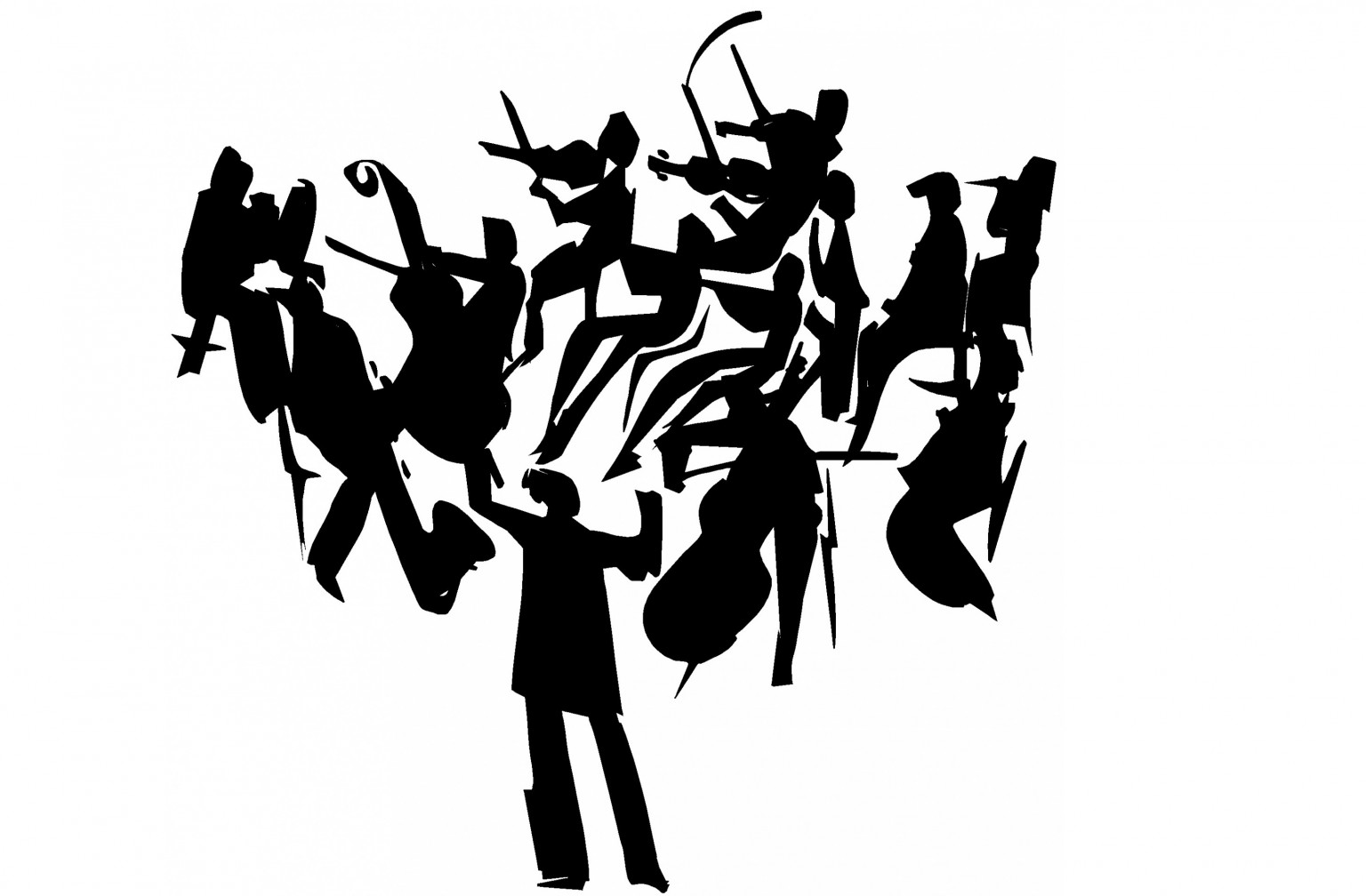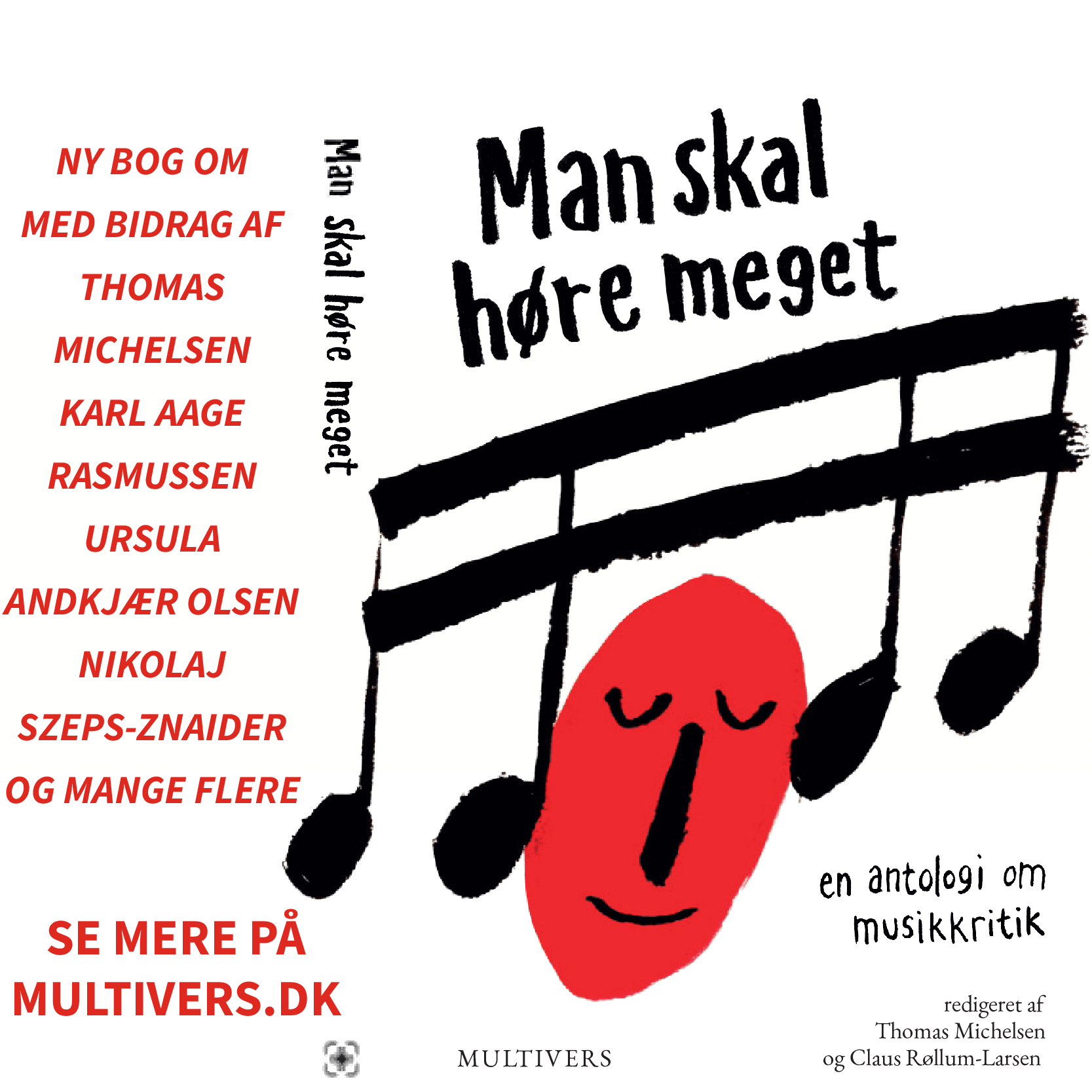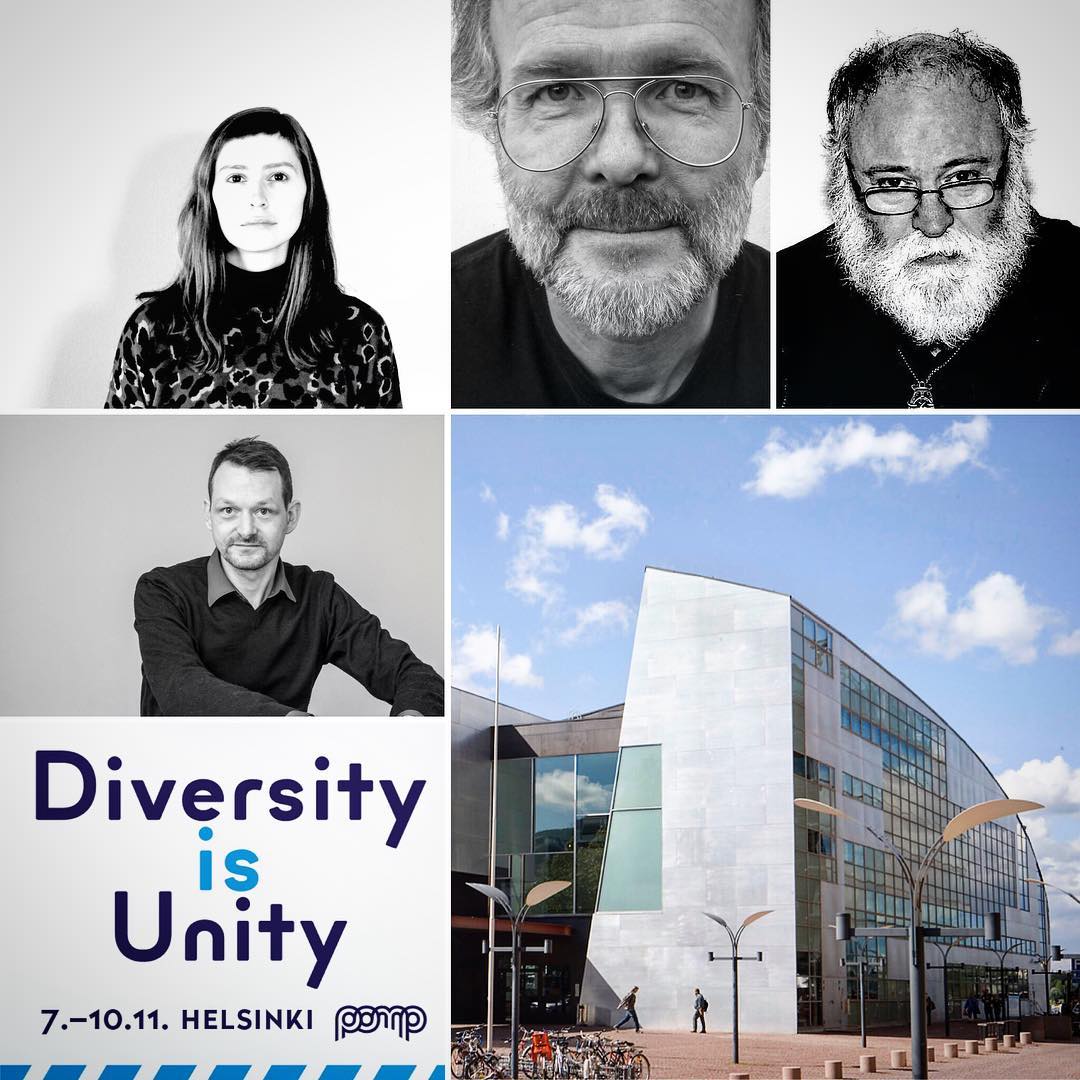
Not so diverse after all
Two years ago I left the Nordic Music Days in Reykjavik feeling excited. It had been a festival where everything seemed possible, presenting a diverse palette of what contemporary music and sound can be. I experienced installations, orchestral music, chamber recitals, conceptual works and performance-based pieces – sound and music in so many different forms – filling the Harpa Concert Hall and Conference Centre, from its underground parking lot to the concert hall and even the very facade of the building.
It was a total abundance of impressions. Some works blew my mind, others didn’t do much for me. Fellow composers told me they had the exact same experience – even though we perceived many works in completely different ways. If quality lies in the eyes of the beholder, the 2016 Nordic Music Days certainly proved that aiming for diversity will improve the overall quality of a festival. This edition of the Nordic Music Days was also the first to have an equal representation of female and male composers, which in no way compromised the ambition to represent what is currently happening in Nordic contemporary sound and music – quite the contrary.
Aiming for diversity will improve the overall quality of a festival
Also present at the 2016 edition of the Nordic Music Days was the Finnish composer Osmo Tapio Räihälä. Before arriving in Reykjavik he had been named the artistic director of the 2018 edition of the festival in Helsinki. But unlike me, he was critical of the Icelandic programming when it came to the question of the gender ratio. Before the Helsinki launch in November he was interviewed by the Finnish newspaper HBL, calling the Reykjavik approach ‘very interesting’: ‘Half of the program was by Icelanders and exactly half of the composers were women. I do not mind that half of the works are by women, but if you apply such rules every year, it becomes a case of positive discrimination.’
Räihälä’s criticism, which he had also expressed on previous occasions, made me unsure whether to even apply for the Helsinki festival – I don’t know if other female composers felt the same way, but the 44 composers selected for the festival were mainly male [32 out of 44, ed.]. I also noticed the lack of Icelandic composers – with only three chosen and one present at the festival.
‘Diversity is unity’
Among a lot of instrumental music presented at the festival four sound installation projects by four electro-acoustic composers were chosen for the programme – including a reworked installation version of my Works for Listening (2017).
As I arrive in Helsinki I see ads for the 2018 Nordic Music Days on billboards and trams passing by with the theme of this year’s festival written with bold letters: ‘Diversity is unity’. A few days earlier the festival published a Facebook post advertising the ‘dazzling sound installations’. Accompanying the ‘Diversity is unity’ slogan you see the photos of me and my three colleagues Guttorm Kittelsen, Rikhardur H. Fridriksson and Lars Lundehave Hansen. I strongly considered buying a fake beard to fit in.
A colleague of mine commented on the post asking ‘what is supposed to be “diversity” in that event?’ and the festival replied: ‘Our definition of the word “diversity” relates here – just like it has done previously – only to musical characteristics, to those perceptible by ear.’ Choosing a potent and powerful buzzword like ‘diversity’ and then expecting it to be understood solely in a sonic context sounds to me like arguing a reality that only exists in a vacuum.
In the HBL interview, Räihälä talks about a huge stylistic width in the Nordic art music scene compared to Central European festivals such as the Donaueschingen Festival and the Darmstadt Summer Courses:
‘They [the Central European festivals, ed.] change a little bit every year, but the core remains the same. You will always be able to find young purists in the audience who will boo when someone plays two successive traditional idiomatic tones on a violin. In the Nordic countries we have always had a completely different stylistic diversity and I hope the Nordic Music Days will remain a forum for versatility.’
Choosing a potent and powerful buzzword like ‘diversity’ and then expecting it to be understood solely in a sonic context sounds to me like arguing a reality that only exists in a vacuum
I agree that the Nordic countries possess a huge stylistic width, even though I did not experience it at the 2018 Nordic Music Days, but I would not necessarily say that we have a broader stylistic width than what you will find in Central European countries or other parts of the world. It remains problematic to use a word like ‘diversity’ without addressing its many non-sonic implications and I wonder how people outside the festival perceived this theme and the festival in general when the trams circulated the city.
The power of curating
The opening reception takes place at the Old Court House, a beautiful old neoclassical building opposite the Helsinki Cathedral. There are platters of food, glasses of wine and an instrumental duo ready to perform a Finnish work. It’s a setting of history and tradition and I feel like a rebel entering the house without an invitation (which I never received).
I’m very curious to hear the opening speech by Osmo Tapio Räihälä who singlehandedly curated the whole festival and willingly chose such an important but conflicted festival theme. In his opening speech he addresses the gender issue and informs us that with approximately 20 percent female composers applying he’s very pleased that they managed to programme one female composer amongst every five. He says he looks forward to when the situation is different … And that’s it. I’m still waiting for the rest of the sentence, but he moves on to other aspects of the festival. Even though I understand the math involved, I still feel curators need to realise they actually have the power not only to talk about the prospect of change, but actually produce such change.
Curators need to realise they actually have the power not only to talk about the prospect of change
In my work as a board member of UNM Norway (Young Nordic Music) and the leader of nyMusikk Nordland (a Norwegian organisation for experimental sound and music) I’ve been working with these issues myself. UNM is based on an open call (like the Nordic Music Days) and we did a lot of work to get more female applications. I see a tendency to a broader genre perspective in our open calls giving more female applicants and I would also argue that having more diverse works to choose from will improve the overall quality of a festival.
I could write a lot about the power and responsibility of curating but I’ll end here for now quoting an I Care If You Listen interview with Peter Meanwell, the artistic director of Borealis Festival:
‘It isn’t – and has never been – just about the quality of music. Gender/race/socio-economic factors have always played a role in who has access to resources, who is encouraged to become an artist, who has the agency to be on the stage. Plus, I’ve been to lots of festivals and concerts full of boring pieces by men, so the argument that inequality is justified because it is “all about quality” is nonsense. This doesn’t mean that there haven’t been great pieces by men, but I think it’s fairly evident that having a penis is no guarantee of quality.’
Genre discrimination
My very first destination at the festival is the Kiasma Museum for Contemporary Art where the sound installations, including my own work, are presented – one work per day. I’m very curious to see the exhibition room for the first time and experience the work of my colleagues. It’s my third time as a composer at the Nordic Music Days and I feel proud about being selected – but I still feel the tangled nervousness of wanting to prove myself as a composer.
This would compromise the whole installation aspect of my work and I was not comfortable saying yes to this at all
I applied with a reworked installation version of my electro-acoustic concert works Works for Listening for higher-order ambisonics. The reworked version is for eight speakers placed in a non-traditional setup in a square room and the installation aspect is a listening situation where no sweet spot exists, the sound becomes physical and the audience can move between the layers of the sound. Prior to the festival I was told that having eight speakers was not possible but that a very experienced sound engineer had made a plan to suit me and my colleagues’ works: a four-channel setup, one speaker in each corner.
This would compromise the whole installation aspect of my work and I was not comfortable saying yes to this at all, but in the end I agreed since I felt proud to be chosen, looked forward to the festival and had already booked travel and accommodation. A decision I came to regret, unfortunately.
On arrival at Kiasma I instantly look for signs of where to find the site of the installations, without any luck. I ask for directions at the information desk: ‘I think it’s somewhere in the back,’ I’m told.
Arriving at what seems like the end of a corridor, with speakers randomly placed in the ceiling, I see a few people sitting on benches and among them I recognise my Norwegian colleague Guttorm Kittelsen (the one with the most impressive beard of the four of us). I sit down and try to get an overview of the situation, but the sound level is very low and is disturbed by some metal buzzing from an ill-placed sub on a cupboard. The few listeners venture on.
After some polite small talk I cautiously ask Guttorm how he feels about his work being presented here in this half-hidden corridor and I realise that he had in fact applied with an electro-acoustic concert piece, not an installation. He has not only had to deal with the compromise of the location, speaker amount/placement and sound level, but also of the concert setting and specific theatrical and visual elements of the piece.
I feel like a spectator in an arena where a fight between gladiators is about to happen
Afterwards I head for the official opening concert with the Helsinki Philharmonic Orchestra at the impressive Helsinki Music Centre (also the home of the Sibelius Academy). The concert hall is amazing. The huge audience is seated all around the orchestra and I feel like a spectator in an arena where a fight between gladiators is about to happen. I notice eight double basses, two grand pianos and lots of percussion.
The piece making the strongest impression on me is the massive Perú Negro (2012) by Jimmy López, which ends the fabulous concert. I feel the cheering is bordering on roaring. Roaring, clapping, stamping. The (male) conductor who tamed the beast, the (male) composer who enters the stage as a victorious master (yes, gender matters here, as proven by recent Swedish and Danish repertoire statistics). It’s instrumental music at its highest. But all I see is the mental image of Guttorm Kittelsen sitting alone in his ‘installation’ in the empty forgotten corridor at Kiasma with the quiet fragments of his work in the background.
I post a video from both locations on social media and get told by the Society of Finnish Composers that they know there is a situation but they do not want a discussion on social media. After the concert I get in touch with the Society to let them know of my frustration. They repeat their awareness of the situation at the Kiasma Museum, but they also inform me that any suggestion of ‘genre discrimination’ is completely unfounded.
The way electro-acoustic composers were presented at the 2018 Nordic Music Days is not acceptable but, unfortunately, it is not an uncommon experience to me and my colleagues, and I urge a joint effort to address this in general. To begin with, I have four pieces of advice for festivals presenting electro-acoustic music.
How to treat composers on equal terms (or, How to deal with electro-acoustic music)
1. The instrumental/electro-acoustic composer will need the type and amount of performers/speakers requested in the score/tech-rider. When programming a piece for X performers/speakers, you have to get the X performers/speakers. Telling the composer, ‘This is not possible, but our very experienced conductor/sound engineer has decided it will work with a different amount of performers/speakers’ should be avoided.
2. The instrumental/electro-acoustic composer will want capable performers/speakers. Try to get as good instrumentalists/speakers as possible. The placement of instruments/speakers in the room is important and in both instrumental and electro-acoustic music there are some standard setups you should be familiar with. If you need more details the composers will be able to inform you about it. Having fixed positions of instruments/speakers in a non-standard format is problematic and should be avoided.
3. The instrumental/electro-acoustic composer will want a non-disturbed listening situation – unless otherwise stated. Presenting works in surroundings where the sound from the work can fill the room should be the starting point unless the composer has specifically asked for something else. Placing sound in random places does not necessarily make people listen so a good rule of thumb is to avoid foyers, stairways, corridors or other open spaces where people pass by – unless it is possible to create a ‘concert setting’ in such places.
4. The instrumental/electro-acoustic composer will want a concert setting – unless otherwise stated. The instrumental/electro-acoustic composer will most likely submit a work with a clearly marked beginning and end, which requires some kind of concert setting with the possibility for listeners to respond to the work when it finishes. Presenting works in an installation setting will strip away the beginning/end of the work, but also eliminate the rituals of response. Unless the composer clearly asked for this, a good rule of thumb is to avoid presenting concert pieces in installation settings.
So what’s next
This being said, I did experience some great instrumental works at the Nordic Music Days in Helsinki. The beautifully layered and textured Concrete (2013) for string quartet by Sami Klemola from Finland made me want to write for string quartet again. Tyskamossarnas sugluft (2016) by Ida Lundén from Sweden created a nostalgic and almost magical vibe ending with the performers (leaving the flutist alone on the stage) walking around playing mouth organs and softly breaking down the barriers of the ‘concert hall’.
The quality of these pieces should be no excuse to prioritise instrumental works over electro-acoustic ones
In the visually pleasing Pas de deux (2014) for solo violin by Tyler Futrell from Norway both sound and violinist were moulded by a puppet master on stage. Glam (2016) by Kristine Tjøgersen, also from Norway, dared to make people laugh, a refreshing approach at a festival with a tendency towards dark and aggressive music. And Kaj Duncan David, representing Denmark, worked with atmospheric and minimalistic lights and sound in his Relay (2015), one of the few composer-performer pieces at this year’s festival.
However, the quality of these pieces should be no excuse to prioritise instrumental works over electro-acoustic ones. In fact, even if you choose to interpret ‘Diversity is unity’ as a stylistic theme for the festival with no social dimensions to it, such as suggested by Osmo Tapio Räihälä in the HBL interview, the gap in curatorial attention between these two genres clearly compromised such ambitions. The team behind next year’s Nordic Music Days in Bodø is aware of what happened in Helsinki. They have been open to dialogue and take these issues seriously. I wish them all the best of luck with the festival and look forward to experience the Nordic Music Days in the Arctic!


